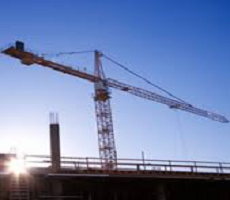August 7, 2013
UK construction and manufacturing buoyant but mixed picture in global property market
 There are signs that the UK’s faltering economy is on the road to recovery. Construction activity in the UK jumped sharply in July to hit its highest level in over three years, according to the latest Markit/CIPS survey of purchasing managers. This may have been driven primarily by a surge in house building, but even the recently moribund commercial construction sector saw an increase in activity. However a new report from the Royal Institute of Chartered Surveyors has highlighted that while the UK may have reason to smile, the picture of global commercial property markets is very patchy.
There are signs that the UK’s faltering economy is on the road to recovery. Construction activity in the UK jumped sharply in July to hit its highest level in over three years, according to the latest Markit/CIPS survey of purchasing managers. This may have been driven primarily by a surge in house building, but even the recently moribund commercial construction sector saw an increase in activity. However a new report from the Royal Institute of Chartered Surveyors has highlighted that while the UK may have reason to smile, the picture of global commercial property markets is very patchy.
In the UK, house building has been targeted with a range of government incentives to drive economic recovery. According to the Markit/CIPS index, commercial construction and civil engineering also grew having shrunk earlier in 2013. Construction was the biggest drag on Britain’s gross domestic product between January and March but returned to growth in the second quarter. While the construction sector grew by 0.9 percent during July, it still remains more than 16 percent lower than it was before the start of the financial crisis in 2008.
However it’s not all good news as economists warned that if demand for property outstrips growth in construction, the stimulus measures could only end up pushing property prices higher.
Construction isn’t the only sector that is performing well. A separate Markit/CIPS survey of the manufacturing sector last week showed that, during July, manufacturing had grown at its fastest pace in well over two years.
There are other signs of recovery in property and construction around the world although the picture is decidedly mixed, according to the latest Global Commercial Property Survey from The Royal Institution of Chartered Surveyors (RICS). The survey uses what it calls an Investment Sentiment Index (ISI) which takes an unweighted average of readings for three measures of the investment market; investment enquiries, capital value expectations and the supply of distressed properties.
The latest report claims that improvements in sentiment in both the occupier and investment segments of UAE real estate market show how the tone in the property industry is continuing to gain ground, reversing the negative pattern that characterised the market from the back end of 2009 through till the middle of last year, says the report.
By way of contrast, the picture in one of the world’s other recent boom countries, Brazil, is rather more downbeat, particularly in the occupier market where the headline sentiment indicator dropped to –39 from –28. It has now been in negative territory for three successive quarters reflecting softer numbers on both tenant demand and rent expectations as well as higher figures for inducements.
The results for Asia demonstrate promise with Japan leading the way on the investment side while also delivering a strong result for the occupier market helped by the dramatic policy initiatives being introduced by Prime Minister, Shinzo Abe. Headline numbers for China remain generally firm despite a slight loss of momentum in the economy and growing concerns over the rapid increase in credit with the investment indicator more positive than the occupier measure.
The real estate picture in India holds broadly flat reflecting a degree of caution in the sector as the central bank grapples with the challenge presented by a subdued economy and volatility in the currency, according to RICS.
In Europe headline indicators generally remain weak for both the occupier and investment markets reflecting the on-going recession in the region. Germany, Europe’s largest economy, continues to be an exception in terms of the growth outlook and sentiment within real estate. It remains increasingly attractive to investors with the RICS Investment Sentiment Index climbing from 18 to 22.
Results for the United States are encouraging with further evidence of rising investor appetite and stronger tenant demand driving both rents and capital value expectations in an upward direction despite some mixed economic data. Meanwhile, the numbers for Canada remain generally firm.
Finally in Australia, the occupier index remains in negative territory and to a greater extent than in Q1 as the economy continues to disappoint while the investment index is slightly positive but less than was previously the case.
Commenting on the Q2 survey results, Simon Rubinsohn, RICS Chief Economist, said: “The latest numbers demonstrate that the recovery story is continuing to gain traction in both the UAE and Japan and that real estate markets across much of Asia and in the US remain generally positive. The turmoil that was evident particularly in financial markets in the emerging world as Ben Bernanke raised the prospect of scaling back on his quantitative easing programme has as yet had little impact on physical property. However as US monetary policy gradually moves onto a slightly more restrictive trajectory, there is a risk that the less benign financial conditions will have an impact on some of the more vulnerable markets.”













